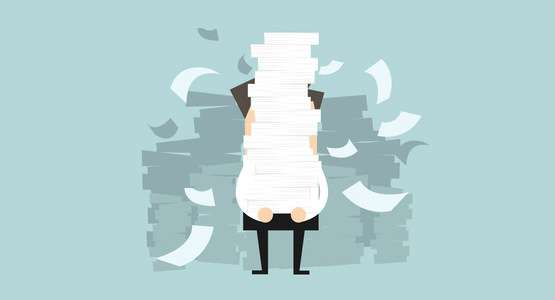Have you ever been in a situation where you sat down to write a list of all the things you needed to accomplish on a particular day, only to realise that your list is endless and seems rather overwhelming? When all the tasks on your list seemed equally important and you had no idea how you were going to accomplish all that?
This, in fact, is quite a common problem experienced by many people from all walks of life, regardless of their profession or the industry they work in. It's important that you manage this situation so that you don't get overwhelmed by all the work you need to do.

So how do you do that?
Luckily, there is an easy way to manage all of this, and it all comes down to learning how to prioritize your workload. Below you will find 10 effective ways of how to do just that.
1. It all starts with planning
What do you have to do for the day? Start by creating a list of everything you need to do, and make sure to include things like conference calls, meetings, report writing, or simple phone calls as well. Everything you need to complete must be written down in order for you to effectively conceptualise what your biggest priorities will be for the upcoming day.
2. Determine what is most important
This is where the real work begins. In order to effectively
prioritize your workload, you need to know what is most important. Look at all the tasks that you have written down. Are there any that need to be done before the others? Which ones will make the biggest difference to your own individual results or the results of the company? Which ones have the tightest deadlines?
Think about your to-do list with these questions in mind and select the ones that fit the description. Or, if you struggle with determining what is the most important out of all these jobs, simply apply the
80/20 rule.
3. Create a list of the most important tasks for the day
Once you've completed the previous step and you know what is important and what can wait, write down the top three most important tasks, the ones that are urgent and are the most pressing out of the entire list you wrote. These are the tasks you'll need to focus on first.
4. Create a list of less important tasks for the day
These are the tasks from your entire task list that don't have the pressing time constraints that the previous group does. Essentially, these are your second priority and can wait until the top three tasks from the previous list have been completed. Put this list aside for now.

If you'd like to learn more about time management, why not take a look at how we can help?
Learn how to manage your time better with our online courses.
RRP from $89 – limited time offer just
$12.99
5. Write out steps you need to take to complete the tasks
Now that you know what your top three most important and urgent tasks are for the day, you need to work out what steps you need to take in order to get them done. Write down all these steps and put this list in front of you where you can see it, so that you can maintain your focus in the right areas during your workday.
6. Focus on one thing at a time
Although multitasking sounds tempting and might make you think that you're achieving more, in reality, this is not the case.
Studies have shown that multitasking has a negative impact on productivity levels.

If you divert your focus onto different tasks at a time, you'll struggle to get the most important ones completed. So instead of working on your top three priorities at the same time, pick the first one and focus on it until it's finished. Follow the same process until all top three tasks are completed.
7. Re-evaluate
When you first write out all your tasks for the day, it's easy to think that everything is important. But just by stopping for a moment and asking yourself, "is all this really important?", you'll probably find that there are many tasks you have written down that aren't that urgent at all.
8. Consider how much time you have
How much time do you have per day to complete your tasks? This is going to play a major role in how productive you are and that's why it's even more important to make sure you follow the previous steps and focus on your top three priorities first. Time is going to be limited each day, so make sure you have enough time allocated for each of your top three tasks.
9. Get started
Now that you have your two lists, it's time to get started. Start working on your top three priorities, making sure you have regular breaks and work in allocated time blocks in order to maximise your productivity. Assign an hour or two to each task and focus on working on them during that time period. Make sure to also regularly communicate with any team members or managers regarding your progress so you know you're on the right track.
10. Turn off unnecessary distractions
I know that you need to answer emails during the workday but these are most likely not going to be a priority task compared to the first three items on your list. Make sure email notifications are turned off, as well as any social media notifications on your phone. The less distractions you have, the more productive you will be.
Prioritizing your workload doesn't have to be a daunting process. When you think about all the tasks you need to finish by the end of the day, it might seem a bit overwhelming and you may feel like everything is equally important, but it's not as complicated as it seems.
If you take the time to follow the steps I outlined above, you'll find prioritization much easier and you'll see an
increase in your productivity levels in no time.

If you'd like to learn more about time management, why not take a look at how we can help?
Learn how to manage your time better with our online courses.
RRP from $89 – limited time offer just
$12.99
If you enjoyed this article, make sure to read the previous post in the series,
8 Ways to Create and Manage Task Lists.




























